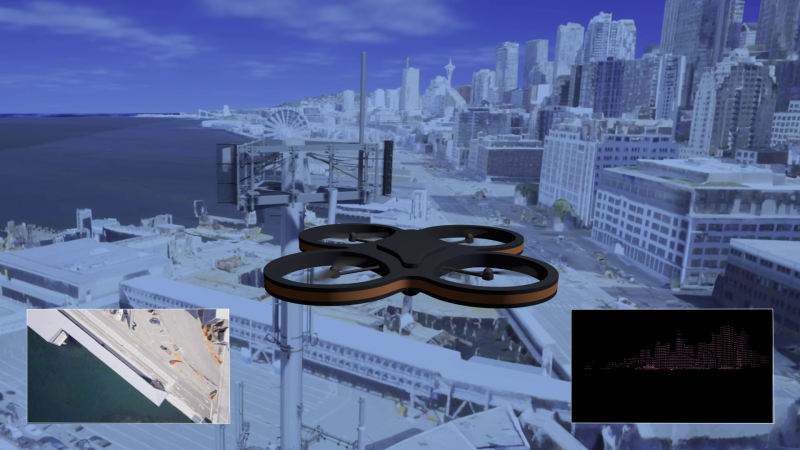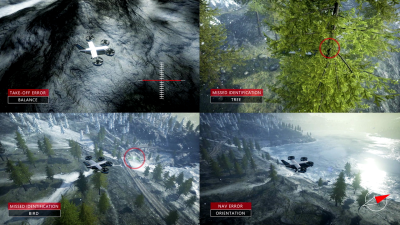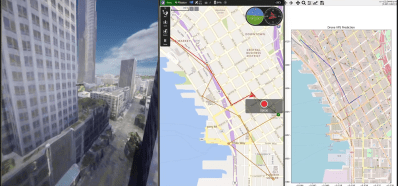
Testing any kind of project in the real world is expensive. You have to haul people and equipment around, which costs money, and if you break anything, you have to pay for that too! Simulation tends to come first. Making mistakes in a simulation is much cheaper, and the lessons learned can later be verified in the real world. If you want to learn to fly a quadcopter, the best thing to do is get some time behind the sticks of a simulator before you even purchase anything with physical whirly blades.
Oddly enough, the same goes for AI. Microsoft built a simulation product to aid the development of artificial intelligence systems for drones by the name of Project AirSim. It aims to provide a comprehensive environment for the testing of drone AI systems, making development faster, cheaper, and more practical.
The Cheaper Way of Making Mistakes
Many companies are developing drones to take on tasks that have historically been executed manually by humans. For example, lofting a drone up to look at a wind turbine nacelle or insulators on a power line is far safer than having a human climb up the structure. However, with a basic drone, this requires a skilled pilot to avoid crashing into expensive hardware, particularly if conditions get hairy. Automation would allow drones to handle their tasks themselves at the mere push of a button.

Testing drone AIs in the field is difficult, though, with plenty of risks involved. Let’s say you’re building an AI-controlled drone to inspect powerlines. If the drone’s navigation algorithm isn’t quite right, you might watch it sail out over the ocean, never to return. Meanwhile, if you haven’t got the object avoidance quite right, it could run straight into the powerlines it’s supposed to be inspecting. The consequences are even worse if it happens to take down power to the local area in the process.
Simulation offers a way to test drone AIs in various conditions without the risk to life, limb, and property. Drone behaviour can be quickly run through a sanity check, and silly mistakes can be spotted easily. If the drone crashes in the simulator, you simply hit reset, make some changes, and go again. In real life, you have to pick up the pieces and rebuild the drone first, after apologizing to the owner of whatever it just hit.
Microsoft’s Offering
Project AirSim is Microsoft’s new simulation offering for drone development. It enables drone AIs to be tested and developed in a realistic 3D world. Conditions like wind, rain, and snow can all be simulated, along with different environments, from urban cityscapes to thick forests.
Included will be recreations of places like New York City and London, as well as more generic offerings such as a virtual airport. Data from Bing Maps will also be available to create detailed 3D environments of other locations around the world.
Having such a environment to test in is invaluable for developing not only AI to control drones, but the sensors those systems rely on. For example, when developing a machine vision system, one may wish to test how it works during the day, at night, and in dense foggy conditions. Achieving this in reality would require waiting for the weather to change, but it can be simulated at will.
Project AirSim also hopes to help designers quantify the performance of their drones. A particularly windy test environment could show how battery life is affected in such conditions. Things like climb rates and loiter times can also be quantified in the simulator to collect ballpark figures ahead of real-world testing.

Project AirSim is a new offering, developed from Microsoft’s earlier open-source project of the same name. That codebase is still available to the community, but required users to have significant experience in coding and machine learning disciplines.
To open up development to a broader audience, Project AirSim will include AI building blocks for common control tasks. Users will be able to integrate existing AI systems for tasks like automatic landings or obstacle avoidance into their drones. Having these modules included makes sense, as the vast majority of drones can benefit from the use of similar modules applicable to many missions.
Some heavy-duty collaborators are working with Microsoft on the project, too. Ansys has helped develop physics-based sensor simulations to provide realistic sensor outputs to simulated drone control systems. Meanwhile, MathWorks is working on a system to let users import their own physics models to the simulator via its Simulink software.
Drones are set to revolutionize all kinds of fields, from environmental monitoring to delivering the mail. Simulation will go a long way to helping develop autonomous drones as quickly and affordably as possible. Microsoft’s new offering will likely find plenty of customers eager to get to testing.
0 Commentaires